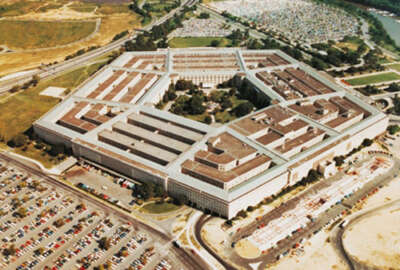
Navy personnel services and facilities jeopardized by lack of funding
Navy officials told lawmakers facilities sustainment cuts have hurt personnel services and building modernization efforts.
The Navy is losing the battle for facilities maintenance due to a lack of funding, leading to reduced quality of life services for personnel.
The Navy is funding the restoration of its facilities only enough to maintain the overall condition of its most critical infrastructure in the short term, Vice Adm. Dixon Smith, commander of Navy Installations Command, told members of the House Armed Services subcommittee on readiness on Jan. 8.
Smith added that the Navy is unable to fund its facilities sustainment programs to the level required by the Defense Department, and it is getting farther from meeting that minimum as each year passes.
“In Oceana, we have 13 barracks, currently 10 of them are rated substandard … of those 10 we have five that are currently being programmed and funded to get rectified,” said Capt. Lou Schager commanding officer at Naval Air Station Oceana.
The Navy has also been forced to cut hours on facilities like gyms to fund more critical operations facilities, Smith said.
“When sequestration occurred we had to reduce a lot of our quality of life facilities so we reduced hours in the gyms, we reduced hours in our single sailor facilities,” Smith said. “We’ve now been able to buy some of that back.”
Smith said the two-year budget deal and the budget certainty along with it have been able to bring back some quality of life services, but not all of them.
“We still provide the gym hours, we still provide the resource, we just don’t provide the volume of it,” Smith said.
The Defense Department mandated that the services fund sustainment programs at 90 percent or higher, but Smith said the Navy is unable to do that and can currently only fund those programs at 80 percent. Additionally, the lack of funding is forcing the Navy to decrease its sustainment funding by 2.5 percent each year.
Smith said part of the problem is the Navy cannot repair most facilities when it is required to do so and only fixes them when something breaks. Once something breaks the Navy must take more funds from sustainment accounts to fix immediate problems.
Rear Adm. Mary Jackson, commanding officer of Navy Region Southeast, said she was not optimistic about the Navy getting to full spectrum readiness because of the facilities issue.
“To get 100 percent funding still doesn’t get us to full spectrum readiness because we have degraded so significantly over time, so it is hard for me to imagine how we get as far as we need to, to get to full spectrum,” she said.
The Marine Corps and the Army have both said in the past that they are forced to compromise infrastructure modernization due to a lack of funding.
“Within our sustainment accounts we’ve had to defer many requirements and many capabilities,” said Maj. Gen. Charles Hudson, commander of Marine Corps Installations Command, during a December readiness subcommittee hearing. “The primary focus, of course, is to prepare for our forces to deploy now or tomorrow and we made an institutional decision to defer sustainment requirements to later on … that will result in the gradual degradation of our capability and over the long term that will cause the cost to increase dramatically.”
Hudson said the Marine Corps projects within the next five years will mean a $1 billion bow wave of requirements that it will not be able to pay for due to reduced budgets or reduced top lines.
As a result, required training is being delayed due to a dearth of available ranges, harming the military’s readiness and essential infrastructure is degrading.
Ranges need to be maintained, there is pressure on current ranges to be modernized and there is the cost of future range development, Commander of 2nd Marine Division Maj. Gen. Brian Beaudreault told lawmakers.
“I have 68 barracks in the 2nd Marine Division that my Marines live in, 28 of which have been renovated or newly constructed,” Beaudreault said. “Forty of those remain. Under the current funding line it will take until 2034 to renovate the remainder of those barracks.”
That’s not to mention the upgrades buildings need now that they rely more on technology.
Buildings are just as susceptible to cyber attacks as any other electronic platform. Not only can hackers get into things such as the heating, ventilation and cooling systems and electrical grids, but they can also access more critical infrastructures, compromising intelligence and safety.
John Conger, the acting assistant defense secretary for Energy, Installations and Environment, said during a Nov. 17 speech that eventually DoD is going to have to invest real money into the cybersecurity of buildings.
That includes hiring technically savvy personnel that can do maintenance on buildings.
That poses a significant problem when DoD’s funds aren’t even covering what is needed to maintain bases and buildings.
Conger said DoD already is running risk with just basic building maintenance because it is underfunded.
It’s not looking like those modernization efforts will get funding anytime soon. DoD is facing a $17 billion deficit in 2017 due to the budget agreement and the President’s decision to keep troops in Afghanistan.
DoD Comptroller Mike McCord said during a Nov. 30 speech that modernization efforts will be taking the brunt of the cuts the department must make in 2017.
DoD Undersecretary for Acquisition, Technology and Logistics Frank Kendall also said during a Dec. 2 speech that modernization efforts would take a “disproportionate” cut in the 2017 budget.
Copyright © 2025 Federal News Network. All rights reserved. This website is not intended for users located within the European Economic Area.
Scott Maucione is a defense reporter for Federal News Network and reports on human capital, workforce and the Defense Department at-large.
Follow @smaucioneWFED





